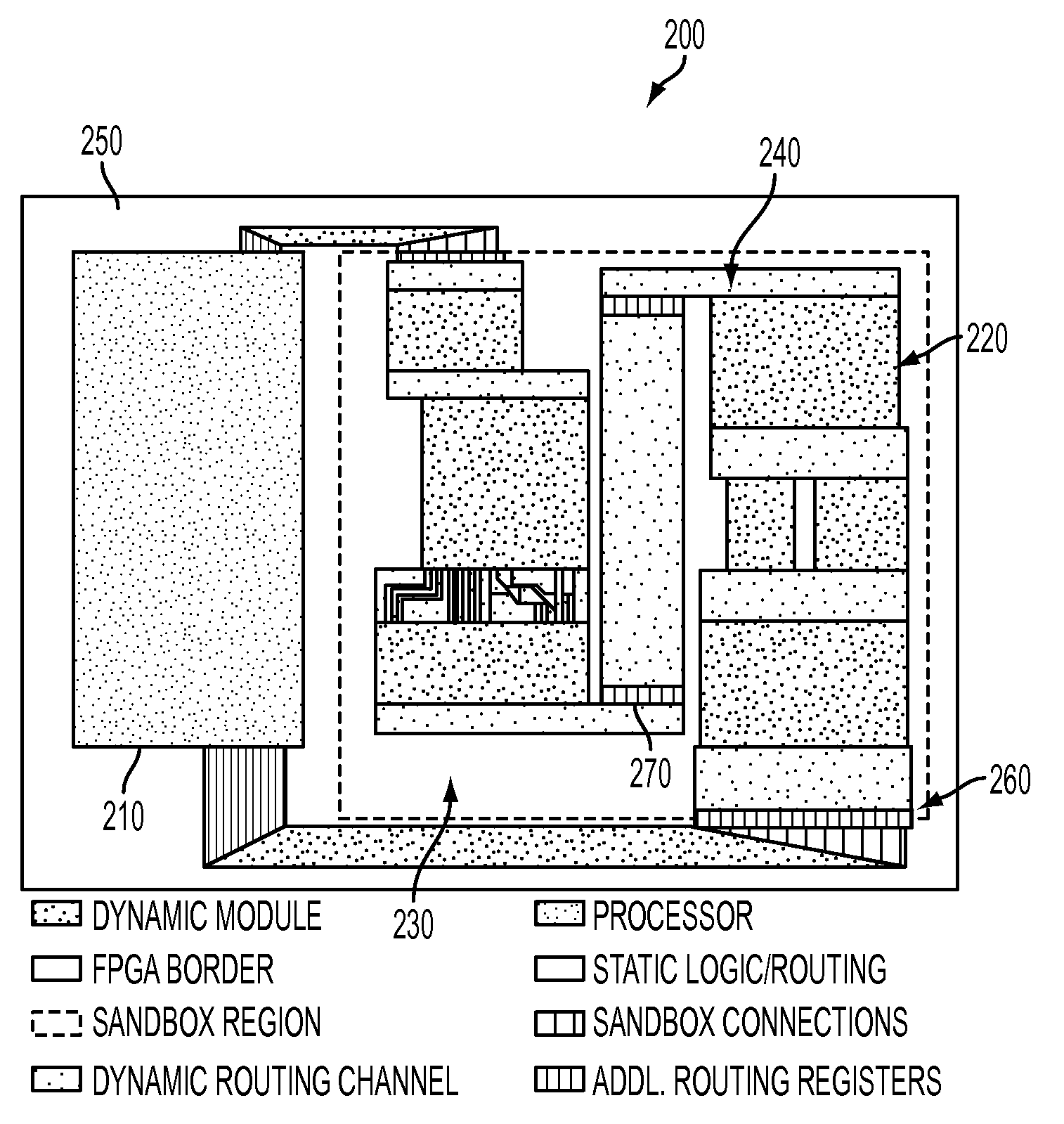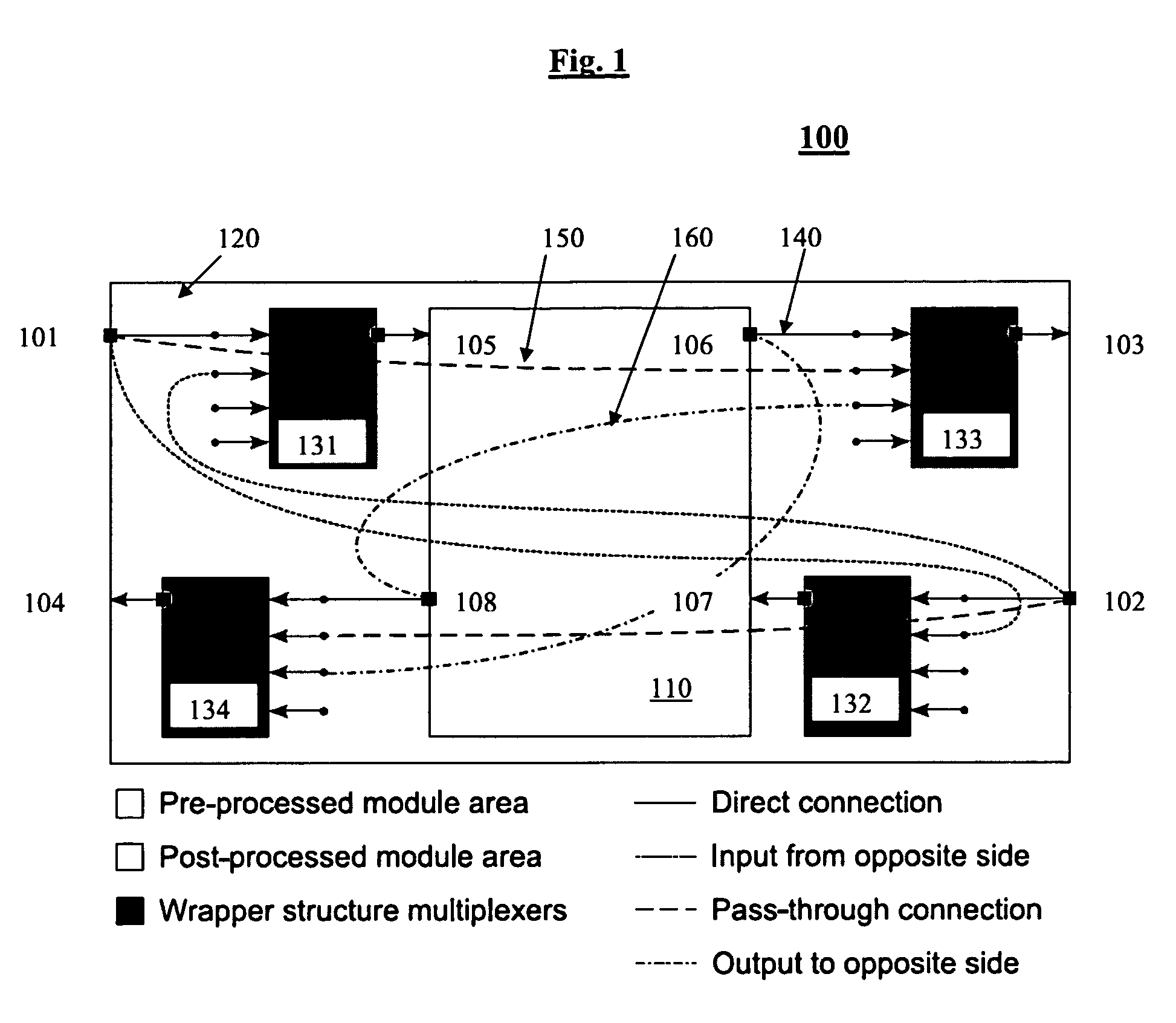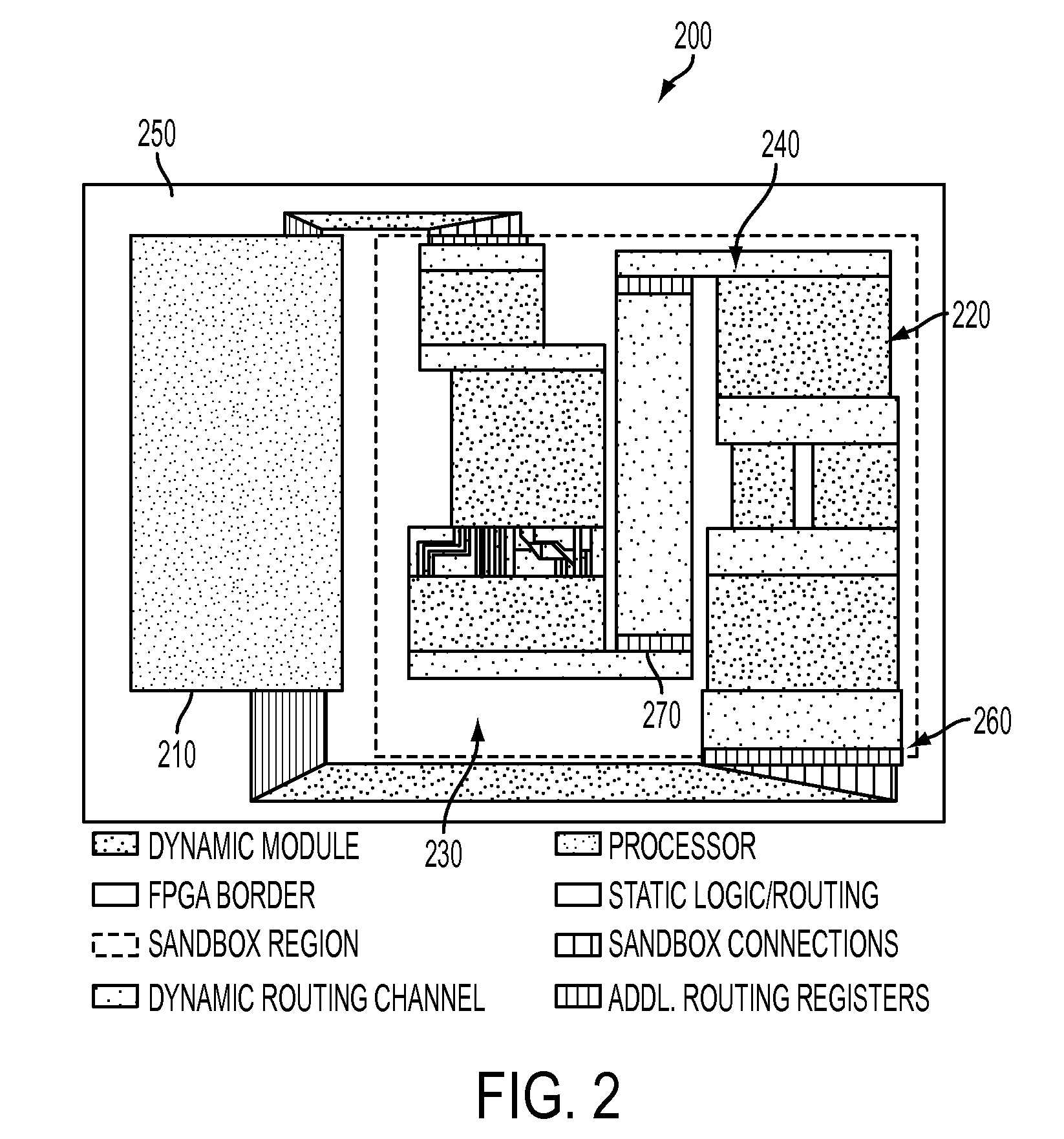Wires on demand: run-time communication synthesis for reconfigurable computing
a reconfigurable computing and run-time communication technology, applied in the field of reconfigurable computing and reconfiguration of fieldprogrammable gate arrays, can solve the problems of time and energy consumption in recompiling and reconfiguring an fpga, volatile configuration memory of an fpga, and loss of fpga functionality
- Summary
- Abstract
- Description
- Claims
- Application Information
AI Technical Summary
Benefits of technology
Problems solved by technology
Method used
Image
Examples
Embodiment Construction
[0026]Preferred embodiments of the invention will be set forth in detail with reference to the drawings, in which like reference numerals refer to like elements or steps throughout.
[0027]The present invention divides the reconfiguration of an FPGA into two main steps: (1) creating a dynamic module library during compile-time operations (preprocessing dynamically instantiated IP) and (2) computing the reconfiguration external to the FPGA during run-time operations (placing modules and completing connections). After the reconfiguration is computed, the system sends partial bitstreams that represent the reconfiguration function to the FPGA. The FPGA contains a basic, static region and a dynamic region. The dynamic region is also called a sandbox where, as explained below, logic modules are reconfigured, placed and interconnected during run-time operations.
[0028]The dynamic module library may be created during compile time. The library is composed of preprocessed IP blocks, stored in th...
PUM
 Login to View More
Login to View More Abstract
Description
Claims
Application Information
 Login to View More
Login to View More - R&D
- Intellectual Property
- Life Sciences
- Materials
- Tech Scout
- Unparalleled Data Quality
- Higher Quality Content
- 60% Fewer Hallucinations
Browse by: Latest US Patents, China's latest patents, Technical Efficacy Thesaurus, Application Domain, Technology Topic, Popular Technical Reports.
© 2025 PatSnap. All rights reserved.Legal|Privacy policy|Modern Slavery Act Transparency Statement|Sitemap|About US| Contact US: help@patsnap.com



